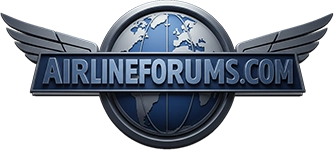USA320Pilot
Veteran
- Joined
- May 18, 2003
- Messages
- 8,175
- Reaction score
- 1,539
More "Transformation Plan" hints have surfaced.
Apparently, the plan will include 60 additional A320 family aircraft with 30 delivered in 2004 & 30 in 2005, no W-2 cuts, no pilot furloughs, increased ASM's, rolling hubs, new PHL runway traffic patterns, more point-to-point flying with the Airbus fleet, the B737s doing the hub flying, reduced PIT hub fees, facility consolidation (PIT ground schools, simulators, rez, and operations offices could be moved to North Carolina or westward) and major contract changes for all employee groups designed to boost productivity.
There will be 85 EMB-170/175s delivered in the next 31 months, MidAtlantic will initially be based in PIT, and the mainline RJ division will be deployed in the three hubs/focus cities. There will be more Caribbean/European expansion and more alliance development with United, Spanair, Lufthansa, Star, and the GoCaribbean network.
According to today's Pittsburgh Post-Gazette, US Airways' chief executive officer Dave Siegel's goal, as outlined in a private board meeting Dec. 10, is to lower expenses so that average seat costs excluding fuel are 6 cents a mile in the point-to-point, regional jet part of his system and 8 cents in the hub-and-spoke part of operation (its costs excluding fuel was 9.52 cents at the end of the third quarter, vs. Southwest's 6.42 cents). To reach those projections, Siegel has already identified $200 million to $300 million in savings for 2004.
Chip comments: I believe every employee would like to see the intangible benefit of being competitive truly played out, but how can we do that if we do not discuss the issues with management? What would it be worth to have a business plan that could work by expanding block hours and increasing productivity across-the-board to average down unit costs?
I recognize the devil is in the details, but I sure would like to see the details so we can make an informed decision, which should occur shortly after the new year.
Regards,
Chip

Apparently, the plan will include 60 additional A320 family aircraft with 30 delivered in 2004 & 30 in 2005, no W-2 cuts, no pilot furloughs, increased ASM's, rolling hubs, new PHL runway traffic patterns, more point-to-point flying with the Airbus fleet, the B737s doing the hub flying, reduced PIT hub fees, facility consolidation (PIT ground schools, simulators, rez, and operations offices could be moved to North Carolina or westward) and major contract changes for all employee groups designed to boost productivity.
There will be 85 EMB-170/175s delivered in the next 31 months, MidAtlantic will initially be based in PIT, and the mainline RJ division will be deployed in the three hubs/focus cities. There will be more Caribbean/European expansion and more alliance development with United, Spanair, Lufthansa, Star, and the GoCaribbean network.
According to today's Pittsburgh Post-Gazette, US Airways' chief executive officer Dave Siegel's goal, as outlined in a private board meeting Dec. 10, is to lower expenses so that average seat costs excluding fuel are 6 cents a mile in the point-to-point, regional jet part of his system and 8 cents in the hub-and-spoke part of operation (its costs excluding fuel was 9.52 cents at the end of the third quarter, vs. Southwest's 6.42 cents). To reach those projections, Siegel has already identified $200 million to $300 million in savings for 2004.
Chip comments: I believe every employee would like to see the intangible benefit of being competitive truly played out, but how can we do that if we do not discuss the issues with management? What would it be worth to have a business plan that could work by expanding block hours and increasing productivity across-the-board to average down unit costs?
I recognize the devil is in the details, but I sure would like to see the details so we can make an informed decision, which should occur shortly after the new year.
Regards,
Chip





